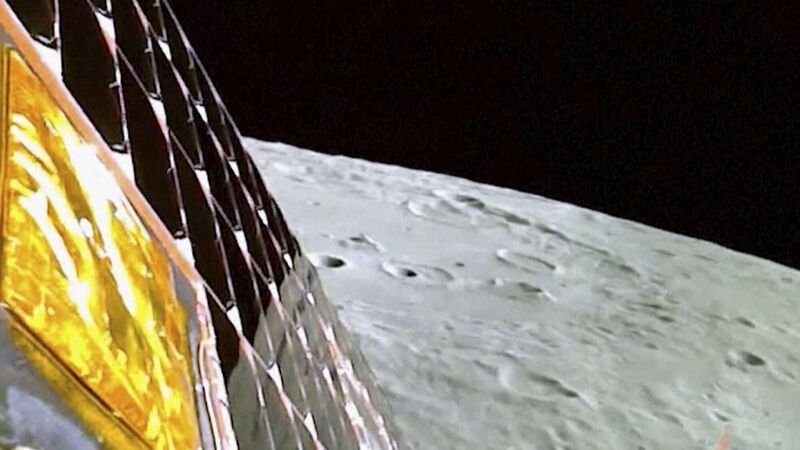Bases, experiments, mining: the race to protect the surface of the moon

The Chandrayaan-3 spacecraft preparing to land on the moon last August. Despite the moon’s vastness, it has only a few prime spots for scientific experimentation and these will have to be protected within the next five years.
Buzz Aldrin, the second man on the moon, described the landscape he stepped on to as “magnificent desolation”. The Apollo landing sites were particularly bland, which was, of course, Nasa’s intention. The spots were selected, in part, for the smoothness of the surface and the lack of troublesome hills, cliffs, and craters.
But in the past two decades, lunar research has revealed a richer picture of our natural satellite. Lunar pits that serve as skylights lead down to lava tubes big enough to house moon bases that would be naturally shielded from space radiation by overhanging rock.
Deep craters at the lunar poles harbour ice deposits, a source of precious water, oxygen, and hydrogen. Some are bordered by high ridges that catch the sun — crucial for solar power — all year round. Mixed into all that soil and rock is all manner of other valuable resources: titanium, aluminium, helium-3, precious metals, and rare earth elements.
No wonder, then, that space agencies and private companies are planning bases, scientific experiments and mining operations on the moon.
Given its size — the lunar surface is nearly three times larger than Antarctica — overcrowding might seem a distant concern. But there are few prime spots on the moon, and land that is perfect for scientific experiments is expected to draw the lion’s share of missions with other activities in mind.
For researchers who want to safeguard sites of extraordinary scientific importance, or SESIs, the immediate task is to agree which spots need what kind of protection.
“It’s imperative that scientists take stock of the fact that these would-be scientific assets are under threat and that they need to proactively identify them as deserving of protection,” said Dr Alanna Krolikowski, a political scientist at Missouri University of Science and Technology, and co-author on a study about the risks to SESIs published on Monday by the Royal Society.
The report calls for a multi-pronged approach to safeguard SESIs. At the national level, it says protection must be written into space policies drawn up by governments, which can authorise and regulate activities and enforce best practice. This is most pressing for countries that have missions bound for the moon imminently.
There are two major international efforts under way to establish rules for lunar activities, but so far neither stresses protection of SESIs, the report adds. The Artemis Accords, an agreement between the US and countries that are partners in the US Artemis moon exploration programme, specifies “safety zones” around installed equipment, but says nothing about protecting sites beyond those of historical interest. The accords do, however, allow private companies to extract materials for profit.
Whatever the Artemis Accords decide, Russia and China, who are collaborating on a lunar research station, are not about to sign up.
A second effort at lunar governance is emerging at the United Nations committee on the peaceful uses of outer space, or Copuos. Its new working group is mulling rules on the extraction of natural resources from celestial bodies, and there are hopes the group will expand its remit to cover SESIs.
Whether that happens, and happens soon enough for astronomers, is another matter.
“We need SESI protections in a timeframe of half a decade or so to prevent important forms of irreversible damage,” said Krolikowski.
“It’s really important to reach beyond the usual suspects in the established spacefaring states and build a genuinely global consensus.”












